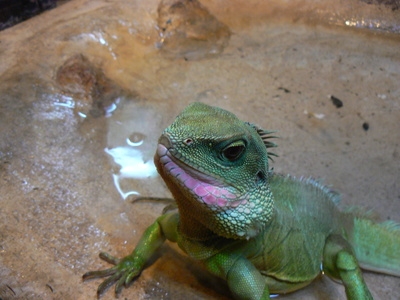
Homemade Reptile Egg Incubator. Store-bought reptile egg incubators can be expensive and hard to operate. If you build your own it can be customized to fit your space and meet your needs. Using an old aquarium, some bricks, a small plastic container and some heating tools, reptile breeders can incubate their eggs easily and inexpensively.

Set up the 10-gallon aquarium where you want to incubate your reptile eggs. It will be very hard to move the incubator once it's set up.
Cover the bottom of the aquarium with bricks and add water so it is level with the tops of the bricks.
Place the submersible heater in the tank, along one of the glass walls. Set the heater to 80 to 85 degrees and allow the water to warm up.
Stick one of the thermometers into the water to measure the water temperature.
Place an inch of vermiculite in the small plastic container. This will hold the eggs in place in the incubator.
Cut a small hole in the lid of the plastic container and stick the end of the second thermometer through the hole so it is resting on the vermiculite.
Place the plastic container on top of the bricks in the aquarium and close the aquarium lid.
Add the humidity gauge into the top of the aquarium to monitor the humidity. Proper humidity level vary depending on the reptile eggs being incubated.
Monitor the temperature inside the plastic container for 24 hours before adding the eggs. You may need to adjust the heater to get the proper temperature.
Create indents in the vermiculite to rest the eggs inside of. Be sure not to rotate the eggs. It's helpful to mark the top of each egg with a felt tip pen to ensure that they remain right-side-up.
Monitor the temperature throughout the day to ensure the eggs are being incubated properly.
Copyright © 2005-2016 Pet Information All Rights Reserved
Contact us: www162date@outlook.com